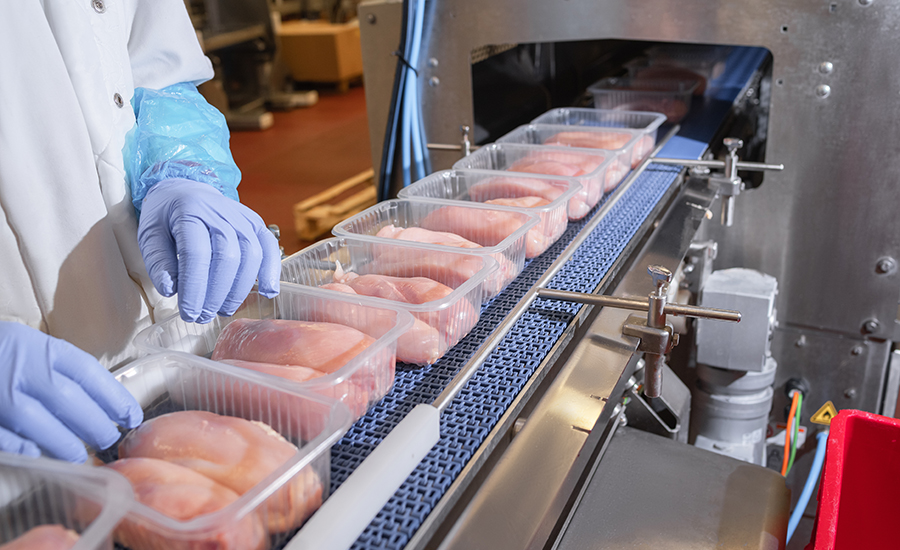While we’ve heard that inflation is cooling, the inflationary impact is still very real for consumers and processors alike.
AAMP Executive Director Chris Young noted that while many people have varying definitions of what constitutes a recession, the impact is unanimous.
“In general, it’s just costing a lot more to live month-to-month than, say, two years ago … I think most Americans are feeling it already, whether we get to a full recession or not,” Young said.
While Young said he did not think the economy is impacting labor very much, he did expect workers to either be more eager to get back into the workforce, or seek part-time work, but that hasn’t happened yet.
“I’m not sure whether the economy has really got to the point yet where it has spurred people to get back into the labor market or to take on part-time jobs or more hours,” Young said.
Michael Farrand, global head of food and ag for DecisionNext is seeing some improvement in labor availability, but is unsure of that growth trajectory, since the industry is only recovering from the intense labor hit during the pandemic.
Young said that due to interest in farm-to-table products, the meat industry has been growing for the last 10 years or so. He noted that smaller processors are still struggling to find appropriate funding for their operations, despite state and federal government efforts to increase access to expansions.
“I think there’s still a bit of frustration there in finding the right funding to be able to expand your business or to try and purchase the equipment or do what you need to keep up with the demand that is there,” Young said, adding that the lack of funding, as well as lack of labor, are hindering industry potential.
“I think right now the untapped part is we don’t really know just how much business they could really do because we don’t have the labor to do it,” he said.
Young said that having funds for automation and new equipment could help processors reach their full potential, but processors are having difficulty getting access to that kind of funding.

As automation becomes more commonplace in the industry, Young said that automation is not replacing workers but filling a need in the market for more workers.
“It’s automation to replace employees they can’t hire, so that they can continue to expand their business and meet the demand,” he said.
PMMI’s vice president, market development, Jorge Izquierdo said that, in this inflationary environment, smaller processors are struggling to gain access to funding for packaging materials and equipment due to higher borrowing costs (State of the Industry 2023, Page 12).
“Amongst high inflation, the Federal Reserve has moved the federal funds rate to its highest point in two decades … This higher cost of borrowing, however, has not impacted large, cash-heavy end-users to the same degree,” Izquierdo said.
For those smaller processors, he recommends focusing on productivity and looking at a total cost of ownership.
“While a full exercise in calculating the total cost of ownership of equipment could be daunting, at minimum a good idea on the principle and all the considerations that need to be taken into account is key to avoid surprises that could impact a successful implementation,” Izquierdo said.
Pressuring processors
Financial strain is impacting not only consumers, but processors as well. Regulatory pressures can put increased financial strain on processors. For the coming year, AAMP is most tuned into the EPA final ruling on wastewater from meat plants, releasing in December 2023. Young said that AAMP is concerned that EPA has not done enough research to be issuing a proposed ruling. If EPA issues the ruling based on too little data, they would be imposing unnecessary, potentially devastating financial pressures on processors.
PMMI is concerned with extended producer responsibility for packaging laws for 2024, which places end-of-life environmental responsibility for products on the producer.
U.S. states, Canadian provinces, and Europe are passing varying EPR legislation, which can lead to unintended consequences, Izquierdo said. While developing EPR policy, Izquierdo recommends planning for future change (2023 Packaging Compass, Page 19).
“Early in the development of an EPR program, dialogue with the packaging value chain to understand design trends and potential restrictions or trade-offs on changing packaging design may help ensure that investments made into packaging recovery reflect what the future of packaging will be,” he said. “By advancing a dialogue on the future of packaging and engaging stakeholders across the packaging value chain, EPR proponents can help ensure these systems are proactive and set up to influence the design and match the needs of both packaging designers and recyclers.”
As California’s Proposition 12 goes into effect Jan. 1, 2024, DecisionNext is keeping an eye on other states that may follow suit.
“While the industry moves to stay ahead of demand for qualifying pork, the fact remains that the pace of demand will continue to stress the industry’s ability to keep up,” Farrand said. “Our customers have been running different scenario levels of pork availability in our software that highlight the potential impacts in 2024.
“Of course, beef import and export levels are also variables our customers gameplay in our software regularly, and in the era of tight beef supplies that will be very important to fully understand,” Farrand said. “For example, the recent Paraguay import authorization isn’t expected to increase total U.S. import levels and doesn’t move the needle in forecasted beef pricing.”
Beef supplies are forecast to be trending downward for a while, and Farrand noted that it will take the industry a while to recover from drought.
“These cow lean inputs are core to producing ground beef, impacting retail and foodservice hamburger sales,” Farrand said. “Ground pork could play a role in supplementing that particular need, along with ground chicken turkey.”
For 2024, the beef industry is in murky waters. Farrand recommends having various cut-to-cattle price ratio forecast models to account for shifting conditions in the cattle market. For DecisionNext, they are forecasting based on graded cutout due to very high cattle price levels.
“This approach increases forecast accuracy significantly in these cattle market conditions,” Farrand said. “With grade shifting among consumers becoming more prevalent, we recommend this approach going forward.”
Young noted that, though the economy has taken a hit, the demand for meat products is still present.
Consumers are changing their spending habits to account for less spending power, veering away from high-ticket items. Young also noted that buying in bulk is another way consumers are adjusting to tighter budgets.
Farrand said that, although consumers can “buy down,” the inflationary impact is still very real.
“With cattle trading at 10-year highs, and chicken at 15-year highs, the consumer is generally struggling to find the values among their options,” he said. “Switching down in beef cut grade or type, or replacing some beef purchases with pork or chicken, still puts the consumer in relatively high price territory today.”
Farrand said that, although prices have decreased from historical highs, the economic forecast for 2024 shows a “new normal” of high material costs.
Although clean-label, natural, and organic products are trending in the industry, those products typically come with a higher price tag.
Young said that reasons for purchasing these “better-for-you” products like grass-fed or natural beef will lead consumers to either switch to a lower-priced option, or stay in that category.





Report Abusive Comment